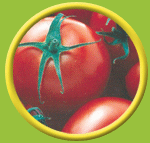|
|
Organic Farming
Organic Farming
History
The organic movement began in the early 1930s and early
1940s as a reaction to agriculture's growing reliance on
synthetic fertilizers. Artificial fertilizers had been created
during the 18th century, initially with super phosphates and
then ammonia derived fertilizers mass-produced using the Haber-Bosch
process developed during World War I. These early fertilizers
were cheap, powerful, and easy to transport in bulk. Similar
advances occurred in chemical pesticides in the 1940s, leading
to the decade being referred to as the 'pesticide era'.
Sir Albert Howard is widely considered to be the father of
organic farming. Further work was done by J.I. Rodale in the
United States, Lady Eve Balfour in the United Kingdom, and many
others across the world.
As a percentage of total agricultural output, organic farming
has remained tiny since its beginning. As environmental
awareness and concern increased amongst the general population,
the originally supply-driven movement became demand-driven.
Premium prices from consumers and in some cases government
subsidies attracted many farmers into converting. In the
developing world, many farmers farm according to traditional
methods which are comparable to organic farming but are not
certified. In other cases, farmers in the developing world have
converted for economic reasons. As a proportion of total global
agricultural output, organic output remains small, but it has
been growing rapidly in many countries, notably in Europe.
Much before the awareness about the Organic farming through the
movements began, there was a well developed Organic farming
system in India. Ancient Indian texts describe the methods of
Organic farming. This is being practiced even today in many of
the villages in India. Sanjeevan system is an example of such
organic farming method.
Methods
 Organic cultivation of mixed vegetables in Capay, California.
Note the hedgerow in the background. Organic cultivation of mixed vegetables in Capay, California.
Note the hedgerow in the background.
"An organic farm, properly speaking, is not one that uses
certain methods and substances and avoids others; it is a farm
whose structure is formed in imitation of the structure of a
natural system that has the integrity, the independence and the
benign dependence of an organism".
Soil management
Plants need nitrogen, phosphorus, and potassium as well as
micronutrients, but getting enough nitrogen, and particularly
synchronization so that plants get enough nitrogen at the right
time (when plants need it most), is likely the greatest
challenge for organic farmers. Crop rotation and green manure
("cover crops") help to provide nitrogen through legumes (more
precisely, the Fabaceae family) which fix nitrogen from the
atmosphere through symbiosis with the bacteria rhizobia.
Intercropping, which is sometimes used for insect and disease
control, can also increase soil nutrients, but the competition
between the legume and the crop can be problematic and wider
spacing between crop rows is required. Crop residues can be
ploughed back into the soil, and different plants leave
different amounts of nitrogen, potentially aiding
synchronization. Organic farmers also use animal manure (which
must be composted), certain processed fertilizers such as seed
meal and various mineral powders such as rock phosphate and
greensand, a naturally occurring form of potash which provides
potassium. Altogether these methods help to control erosion. In
some cases pH may need to be amended. Natural pH amemdments
include lime and sulfur, but in the U.S. some synthetically
compounds such as iron sulfate, aluminum sulfate, magnesium
sulfate, and soluble boron products are allowed in organic
farming. Mixed farms with both livestock and crops can operate
as ley farms, whereby the land gathers fertility through growing
nitrogen-fixing forage grasses such as white clover or alfalfa
and grows cash crops or cereals when fertility is established.
Farms without livestock ("stockless") may find it more difficult
to maintain fertility, and may rely more on external inputs such
as imported manure as well as grain legumes and green manures,
although grain legumes may fix limited nitrogen because they are
harvested. Horticultural farms growing fruits and vegetables
which operate in protected conditions are often even more
reliant upon external inputs.
Weed control
After nutrient supply, weed control is the second priority for
farmers. Techniques for controlling weeds include hand weeding,
mulch, corn gluten meal, a natural reemergence herbicide,
flame, garlic and clove oil, borax, pelargonic acid, table salt,
solarization (which involves spreading clear plastic across the
ground in hot weather for 4-6 weeks), vinegar, and various other
homemade remedies. One recent innovation in rice farming is to
introduce ducks and fish to wet paddy fields, which eat both
weeds and insects.
Controlling other organisms
Organisms aside from weeds which cause problems include
athropods (e.g. insects, mites) and nematodes. Fungi and
bacteria can cause disease.
Insect pests are a common problem, and insecticides, both
non-organic and organic, are controversial due to their
environmental and health effects. One way to manage insects is
to ignore them and focus on plant health, since plants can
survive the loss of about a third of lead area before suffering
severe growth consequences. To avoid using insecticides, one can
select naturally-resistant plants, put bags around the plants,
remove dying material such as leaves,
|